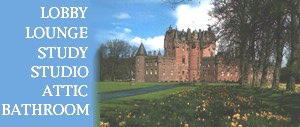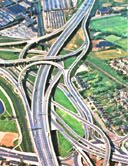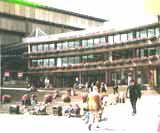|
ABOUT BIRMINGHAM
About Me | About Birmingham
|

|
|
ABOUT BIRMINGHAM
About Me | About Birmingham
|

|
Having lived in Birmingham all my life I think I qualify as a good guide to this city - a city that most people have never even heard of!
Birmingham is Britain's second city and as you may expect it is a very large place.
Birmingham began as a small town (actually, that original area is now the city centre) which swallowed up all other neighbouring villages in the early 19th Century.
During that time it became one of the world's leading industrial cities. The derilict areas that still exist around the city centre and the extensive canal network of the Victorian era show just how important and thriving this city was in the 19th Century.
Birmingham was also well renown for its silver. Silver and gold products are still made 200 years on in the Jewellery Quarter, just to the north-west of the city centre. You can still visit the shops in the neighbourhood to see the rings and chains hand-crafted.
In 1889 Birmingham was crowned as a city by Queen Victoria.
 Birmingham Cathedral |
The city centre's Angelican church was made the city's cathedral in 1905, having being built in an Italian style in 1715. It's small size makes it hardly noticable as a cathedral and the older St Martin's church, built in the 13th century, attracts the most attention with it's tall spire. |
The museum and art gallery in Victoria Square has a good collection of pre-raphaelite paintings, from Van Gogh to Botticelli.
The museum of Science and Industry is just a few hundred yards north in NewHall St. It contains many industrial machines including a fully functional steam engine, called The City Of Birmingham, which runs on the hour showing all the moving parts of a locomotive. The museum has been recently upgraded with 'hands on' giving children the chance to play/experiment with some of the machines, lasers, mirrors & air jets whilst having fun at the same time. Birmingham has many industrial connections. Sarehole mill on the river Cole in the south of the city was the inspiration for JRR Tolkien's "The Hobbit" and was also used by Mathew Boulton to roll steel. Mathew Boulton later moved to the Soho district where he and James Watt perfected the steam engine.
|
Other historical places include a timber framed yeomans house called Blakesly Hall, dating from the 16th century & in perfect condition. Also, just 2½ miles from the city centre is the elaborate Aston Hall. Untouched since 1635, the interiors have been fully furnished in typical 17th century style. Whats more, it's free to visit.
|
 Aston Hall |
|
The Botanical gardens, in Edgbaston, were laid in 1831 and contain many shrubs, alpine plants and tropical vegetation keep in elaborately styled glass houses and outside in the open. You can also see animals like cockatoos, monkeys and bush babies living in their natural environment.
Sutton Park was inherited to Birmingham when Sutton Coldfield merged into the city in 1974.
|
 Sutton Park |
 Spaghetti Juction |
Britain's largest road interchange, Spaghetti Junction, is sited less than 2 miles from the city centre.
|
Brimingham Central Library 
|
But these are hardly the sort of facts that make you want to visit a city.
Up to the early-90's Birimingham City Centre still looked like a flash back from the seventies. Millions of pounds have been spent on targeting tourism to Birmingham.
Cadbury World in Bournville attracts many visitors from around the world. The tour takes you from the cocoa plant growing in the Amazonian rain forests, through the modern factories where you can see chocolates being made to the corner sweet shop and choccy heaven. A big success for kids and grown-up children!
The National Exhibiton Centre, which opened in the late 70's, is Britain's premier exhibition venue. It is home of Crufts (the dog show), the UK Motor Show and, in total, hosts over 100 large scale trade and public exhibitions every year. It currently has 12 halls & a combined floor space of 125000 square metres and is set to double in size before the end of the century.
 Centenary Square In the foreground, from left to right: The Symphony Hall, Convention Centre and Repertory Theatre In the background is the NIA |
Birmingham's canal network has been re-vamped.
Old muddy tow-paths have now been replaced by brick tiled walkways, the perfect place for a romantic walk and see some of the unusual parts of Birmingham.
The centre of the canal network - Gas St Basin - has been practically knocked-down and re-built.
Birmingham is showing that you do not need to erase your industrial history but modernise it to be more attractive and use these areas to the best of your advantage. |
|
|